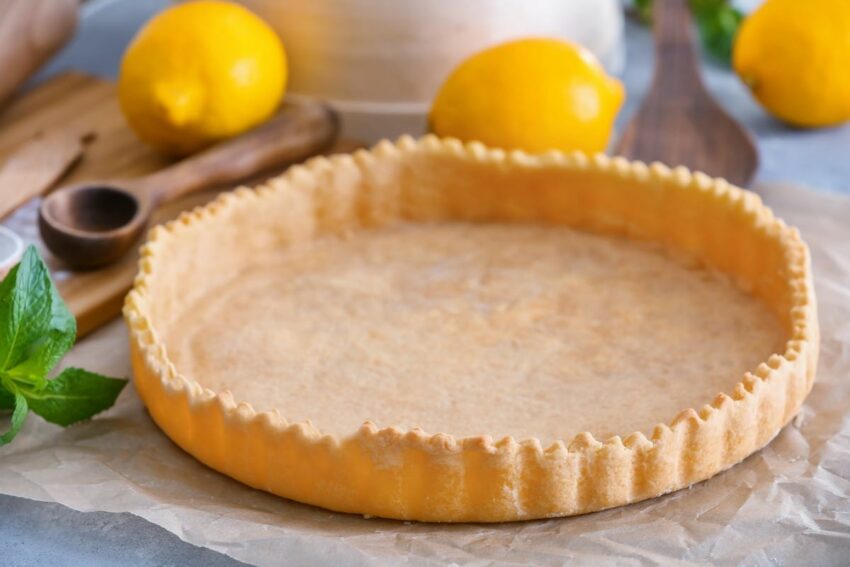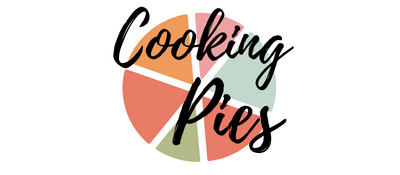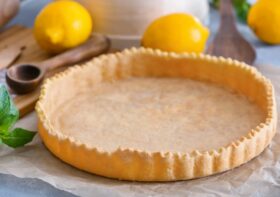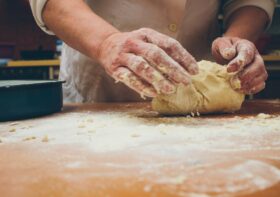How To Tell If Your Pie Crust Is Done

Baking a perfect pie starts with a firm golden-brown crust that sets the stage for delicious fillings like pumpkin, apple, or lemon meringue. Oooh. But how do you know when it’s just right? Today, we will show you how.
How Do You Know When a Pie Crust Is Done?
A fully baked pie crust will be firm and have a golden-brown color. The edges of the crust should be slightly darker, with a crisp texture, while the bottom of the crust should feel firm and not soggy. An ideal pie crust will have a pleasant aroma that signals the dough has been baked to perfection.
How To Check Your Crust Is Fully Cooked
To tell if your crust is fully cooked, gently press the sides of the pie and check for firmness. A fully cooked crust will feel solid to the touch and will have a slight give without feeling mushy. Additionally, if you’ve used pie weights during the blind baking process, ensure that the weights have been removed in the final minutes, allowing the crust to bake completely without moisture trapping it.
What Are the Signs That Your Pie Is Done Baking?
There are several signs that indicate your pie is done baking. Look for a bubbling filling, which shows that the ingredients have melded together and are cooking properly. The top crust, if present, should also be golden and flaky, complementing the overall appearance of the pie. The edges of the pie should hold their shape without drooping or breaking apart, evidence of a well-structured crust.
Furthermore, as the pie cools, you might notice that the filling has slightly thickened, which is another sign that the pie is done. Listen for the gentle bubbling sound coming from the filling, indicating the delicious mixture is ready. Always trust your instincts and visual cues; they’ll guide you to perfect pie results every time.
When Should You Blind Bake a Pie Crust?
Pies that use a wet filling, such as apple pie, need a blind-baked crust to prevent a soggy bottom crust. By pre-baking the crust, you create a barrier that helps keep the crust crisp while the filling cooks. This method is particularly essential for pumpkin pies, cream pies, custard pies, and fruit pies with a high moisture content, ensuring that the bottom crust doesn’t get compromised.
The process of blind baking allows the pie crust to set and achieve a nice golden color before adding any filling. Additionally, this technique helps to stabilize the crust, preventing it from shrinking or puffing up during the initial baking phase. Overall, blind baking is an indispensable step for achieving a delicious homemade pie with a perfectly cooked crust.
How Long Should You Blind Bake a Pie Crust?
The duration for blind baking a pie crust typically ranges from 15 to 30 minutes. This time can vary depending on your specific pie crust recipe and the type of pie you are preparing. For a standard 9-inch pie crust, covering it with parchment and filling with pie weights is recommended to prevent puffing. Aim for a light golden color before removing the weights.
It’s crucial to keep an eye on your crust during this time. If it begins to darken too quickly, you can cover the edges with foil to prevent over-browning. The goal is to achieve a partially baked crust that is firm enough to hold its shape but not completely cooked, as it will continue to bake once the filling is added.
How to Tell If a Blind Baked Crust Is Ready?
To determine if your blind baked crust is ready, look for an even golden color across the entire surface. The edges should be slightly darker, which is a sign of proper baking. Gently press the sides of the crust; if it feels firm and holds its shape without collapsing, it is likely ready. Additionally, you can check for a slight crispness when you gently tap the edge of the crust with your finger.
Another effective method is to observe for steam escaping during the baking process. If you notice steam rising from the crust, it indicates that the moisture is escaping, and the crust is cooking properly.



Leave a Reply